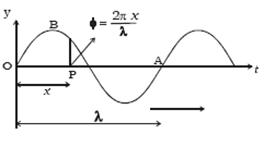

Power quality issues primarily arise due to the harmonic frequencies in the power grids. Consider an electric power system where the harmonic is a current at multiple of fundamental frequency f, which is produced by the action of non-linear loads through rectifiers, lightning, or magnetic devices.

If the signal contained the energy at the fundamental frequency, then the wave of the signal is a perfect sine wave. At each harmonic frequency, there is energy apart from the fundamental frequency. Frequencies 2f, 4f, and 6f are called even harmonics and frequencies 3f, 5f, and 7f are called odd harmonics. If λ \lambda λ represents the wavelength of a wave in a specific medium, then the wavelength of the second harmonic would be λ 2 \frac 5 λ . The fundamental frequency is f, the second frequency would be 2f and the fifth frequency would be 5f and so on. When this signal is projected on an oscilloscope, the waves that are formed repeat themselves at a rate that correspond to the frequency f. The frequency at which the signal occurs or when the maximum energy is absorbed is measured in hertz (Hz). Consider an AC signal, electromagnetic field, or sound wave that possesses a fundamental frequency of “f”.


 0 kommentar(er)
0 kommentar(er)
